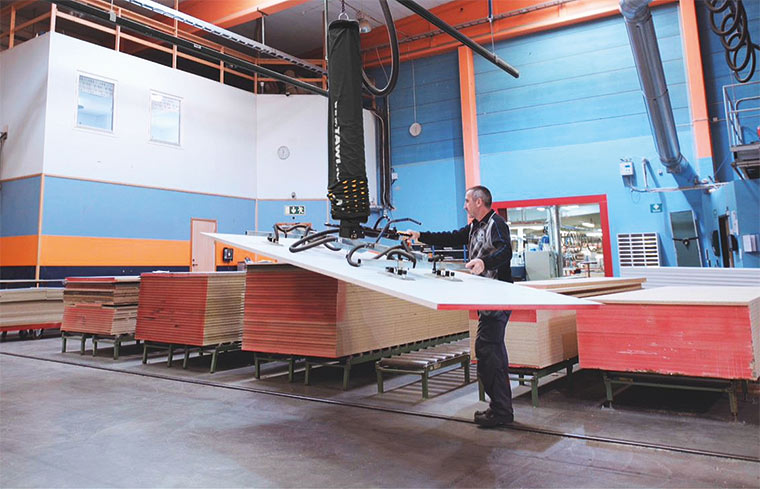"Did you know that the implementation of vacuum lifting equipment in your operations can save you both time and money?" Matt Baker, UK sales manager at TAWI, offers advice on how to work efficiently with vacuum lifters ...
“TAWI vacuum lifters use innovative technology to grip and lift various types of loads. Our systems consist of a vacuum pump, connected by an air hose to a lifting tube,” says Matt.
“At the end of the lifting tube are the suction head and the suction foot which will hold the load, and they come in different sizes depending on what the load is. The feet create an airtight seal between the load and the lifter, ensuring a safe grip of the load throughout the handling process.

“The operator can easily adjust the lifting height by regulating the vacuum level through a control handle. This type of suction lifting is safe and gentle on both the operator, and, most importantly, is quick and easy to use.”
TAWI customers report that its vaccuum lifters have become an indespensible part of their operation: “With TAWI lifters, everyone can lift large and heavy sheets, and the employees can keep an even pace throughout the whole day without straining their bodies,” says Bjorn Skoglun, production leader at LG Collection.
Matt continues: “With our vacuum lifters, you can easily lift sheets of wood weighing up to 500kg. A comfortable and user-friendly control panel makes it easy to keep full control of the load and ensures an ergonomic working position.

“Sheets can be rotated and tilted up to 180°, making it easy to move doors, panels and other sheet materials. Bags and other more porous loads normally require a larger suction foot. For these types of porous loads, the suction foot is often accompanied by a rubber skirt to ensure an airtight seal to ensure that leakage is minimised and suction is maximised.”
Savings from vacuum-powered lifting
Vacuum lift systems come with many benefits for both businesses and people, says Matt, pointing out that a vacuum lifter will almost fully eliminate the weight of any load, making lifting effortless.
“Naturally, this improves employee satisfaction, and will also help save companies from injury-related costs,” he says. “When lifting is effortless, anyone can lift, resulting in improved workforce flexibility, diversity and retention.”









